Have you ever thought of purchasing a product while watching a video ad on an eCommerce store? Imagine if you could pause the video, click on the product you like, and proceed to buy them. Well, videos are changing the way advertising is done, and shoppable videos are at the forefront of this innovative change.
Shoppable videos are gaining traction, and the combination of video and commerce is probably going to change the shopping experience in the future. It will open doors for partnerships, brand engagements and improve overall business results.
Let’s talk numbers and some video marketing stats by HubSpot to support the statement:
- 83% of brand marketers say video has helped them bring leads.
- Live video is the third most-used social media marketing tactic.
- 64% of brands said a video on FB resulted in a new client in the last year.
Brands have already been adding videos to their online business strategies. However, combining creative and engaging videos is not enough. To stay ahead, companies must include unique ways that deliver value to customers. This is where shoppable videos come into the picture.
They shorten the customer journey and streamline sales like never before. Shoppable video experiences drive actions at a higher rate than the mundane experience introduced by many retailers.
What are Shoppable Videos?
Shoppable video is a content type that is either visible on the landing page or social media channels. It attracts customers and directs them to the product pages. With the help of a video, customers can see varieties of products while watching the video. And, if they like any of them, they can click on it. When clicked, the user is directed to another page containing information such as:
- Reviews
- Product details
- Buying details
- Contact information
The shoppable content empowers eCommerce brands to deliver direct and instant sales. A link embeds hotspots into a video to make certain parts clickable. Whenever any shoppable eCommerce video plays, customers can click on icons floating over the models. The more the customers click on the link or video, the higher the click-through rates. The aim behind shoppable videos is to meet the direct purchasing desire that a customer gets after viewing the product.
Businesses use some popular platforms like YouTube, Facebook, Instagram, TikTok, and Snapchat for video marketing, which results in a higher reach to the target audience and an improved shopping experience.
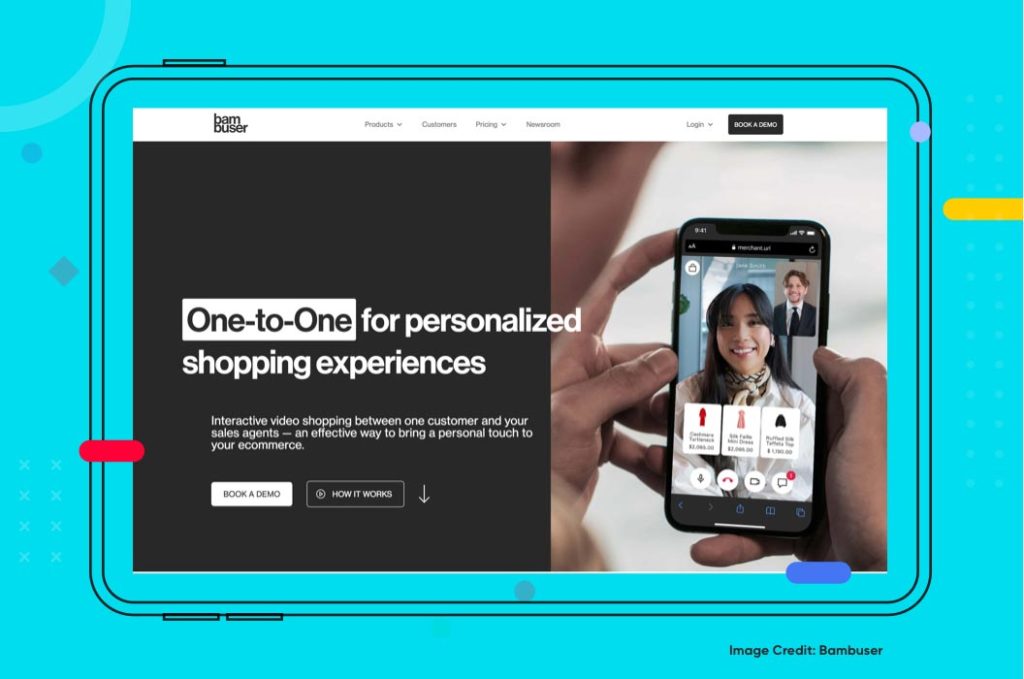
The Importance of Shoppable Videos
With the rise of technology, retail brands can combine content and commerce. It creates a real experience to assist, engage, and inspire the target audience with smart shopping decisions. Retailers and marketers can use shoppable videos as a personalized customer engagement strategy that creates a better user experience and helps customers in their decision-making process.
Globally, the live internet video traffic will increase 15-fold between 2017 and 2022 – Cisco
When a user interacts with a brand, they make instant decisions about the worth of that interaction and choose brands for a value proposition that relates well to their real world. As they browse, a subconscious evaluation occurs, with queries that the potential customer may have, such as: What is its story? Do I care or want to give it a second thought? Why should I pick this product or brand?
Replying positively to these queries can help you convert them into your potential customers. The power of shoppable video ads allows for a more demonstrative explanation of both the story and the urgency of the offer.
How does Shoppable Video Work?
By integrating shoppable features in the videos, brands reduce the number of steps a customer needs to follow to make a purchase. You do not have to scroll up and down the product page or wishlist or remember the product. With clickable feature integration, you can see/touch/try the product, thanks to advanced technology – Virtual Reality (VR) and Augmented Reality (AR).
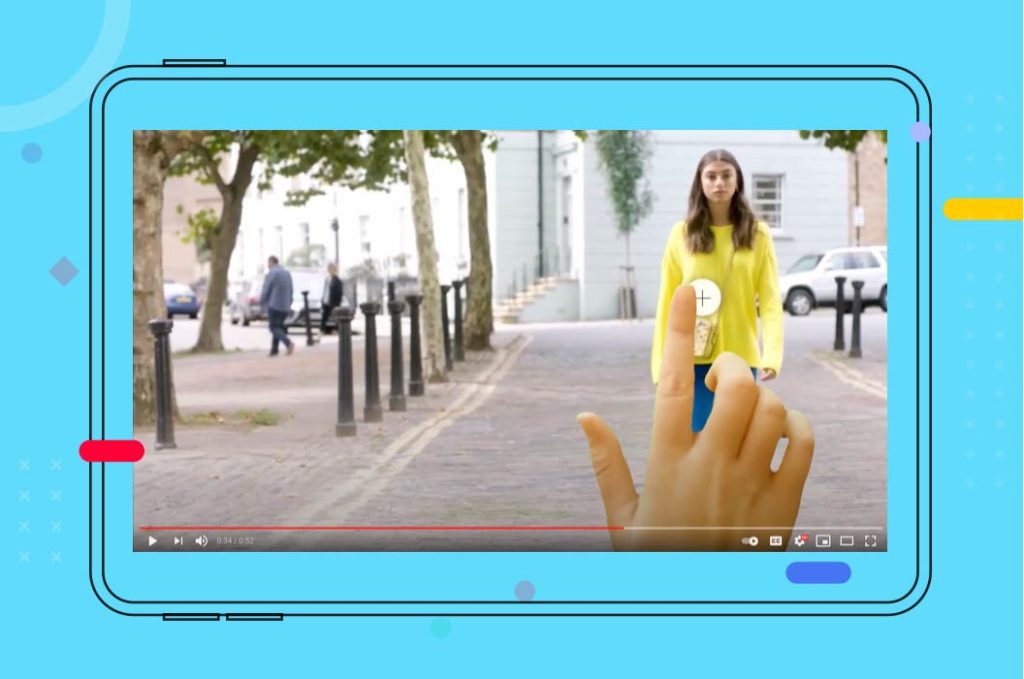
By incorporating an interactive part in a video, retailers can leverage customers’ inclination and interest in the product and make them buy right away.
How Net Solutions Helped a Client with a Shoppable Video Commerce Platform?
Net Solutions collaborated with WooClub to build a unique shoppable video commerce platform for its audience. WooClub is a video platform that brings together a dynamic and innovative channel for influencers, retailers, advertisers, brands, and vloggers to upload and tag videos of their products scene by scene, to boost interest and sales.
Read more about the process and outcome here.
Why is Shoppable Video Right for Your eCommerce Business?
1. Brand Loyalty
Retailers struggle to attract and keep customers engaged. Shoppable videos allow customers to see actual uses of products and enable merchants to offer improved experience. By using the video content on the website, users can watch the real-life benefits of the product from all aspects. When the UX improves, so do sales, conversions, and thus brand loyalty.
2. Sales Boost
A video is a valuable tool that can assist customers with settling on buying decisions. Using videos on the landing page or product page, or in your marketing strategy can increase sales. Shoppable videos provide an excellent opportunity to get an engagement rate that is twice of a regular video.
The use of shoppable videos means that customers don’t have to explore all products on the website to find an item of their preference. They can tap on the product shown in the video and see the details right away. It saves time for users, and you can sell products quickly.
3. Improved Conversions
Merchants using interactive shoppable videos see an increase in conversion rates. They offer a tool to the customer with shoppable videos that makes them stay longer on the website. Videos are proven to increase conversion rates considerably, with users qualifying from top-of-the-funnel to bottom-of-the-funnel.

We respect your privacy. Your information is safe.
4. Enhanced Engagement
Shoppable interactive videos help provide a digital experience that attracts customers and decreases the sales cycle. Using videos with advanced technology on your eCommerce platform enhances customer engagement rate which leads to a better UX. Videos can give an engaging brand experience with a storytelling approach which creates an emotional connection with customers.
5. Re-targeting Customers
Video is an incredible way to reconnect with customers. To drive conversions and increase engagement, you must step into your customer’s shoes to understand them. You must know where they spend most of their time.
Whether they’re on their smartphones, tablets, or websites– videos can follow them everywhere. Video has the potential to capture the viewer’s attention. Engaging viewers and customized content can significantly impact product selection, brand awareness, and cross-channel touchpoints.
Brands That are Making Shoppable Videos Work for Them
Shoppable videos are used by everyone, from fashion retailers to furniture labels. Here are a few shoppable video examples that show amazing creativity.
1. Kate Spade
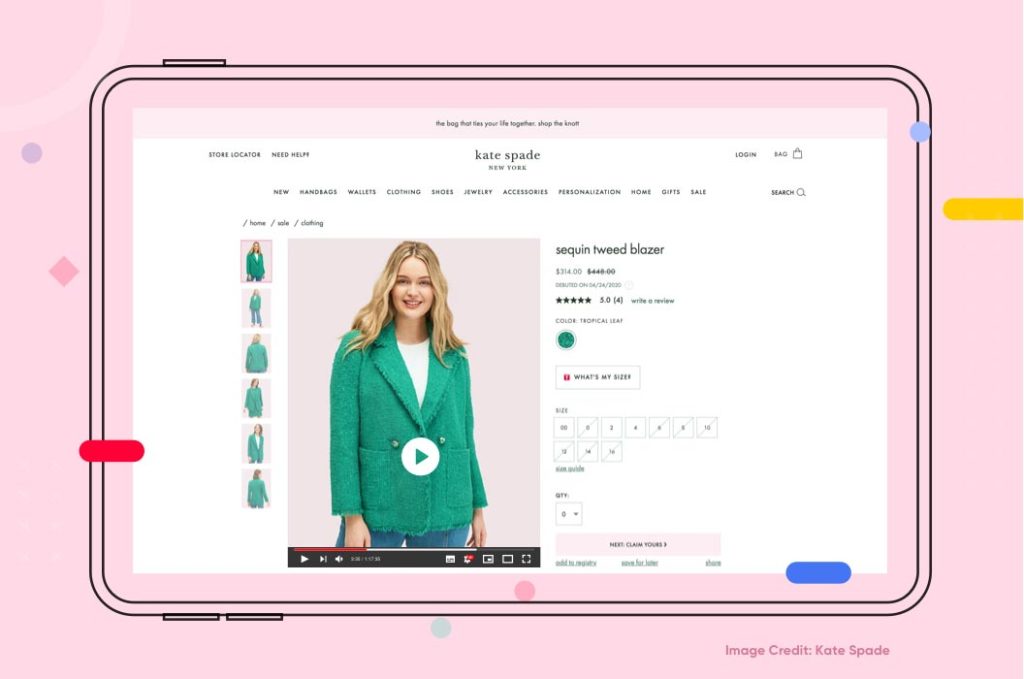
The clothing and accessory brand, Kate Spade, released a holiday video campaign in 2016. The brand tailored its marketing endeavors and technologies to its customers’ needs. They included shoppable video content that allowed customers to click on what they like. Then, they were allowed to add a compiled list of the product automatically to the cart. Once the customers had finished watching the video, they could open the cart to make a purchase. It resulted in offering a seamless experience without interruption.
2. Ted Baker
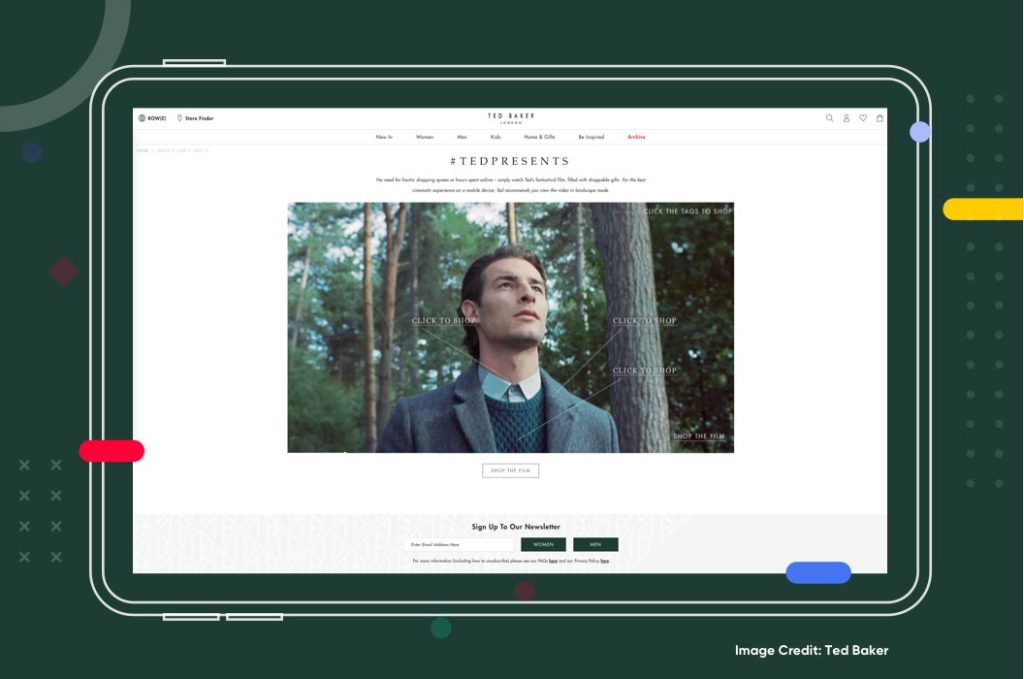
Ted Baker uses videos to engage customers and showcase their products. The video shown above is one of the incredible shoppable content examples and was indeed a big hit.
It shows a tour of the contemporary world where models endorse various products on the go. Every image displays a detailed product list they are wearing and contains a live link to add them to the customer’s shopping cart with a selection of sizes and colors.
3. Puma
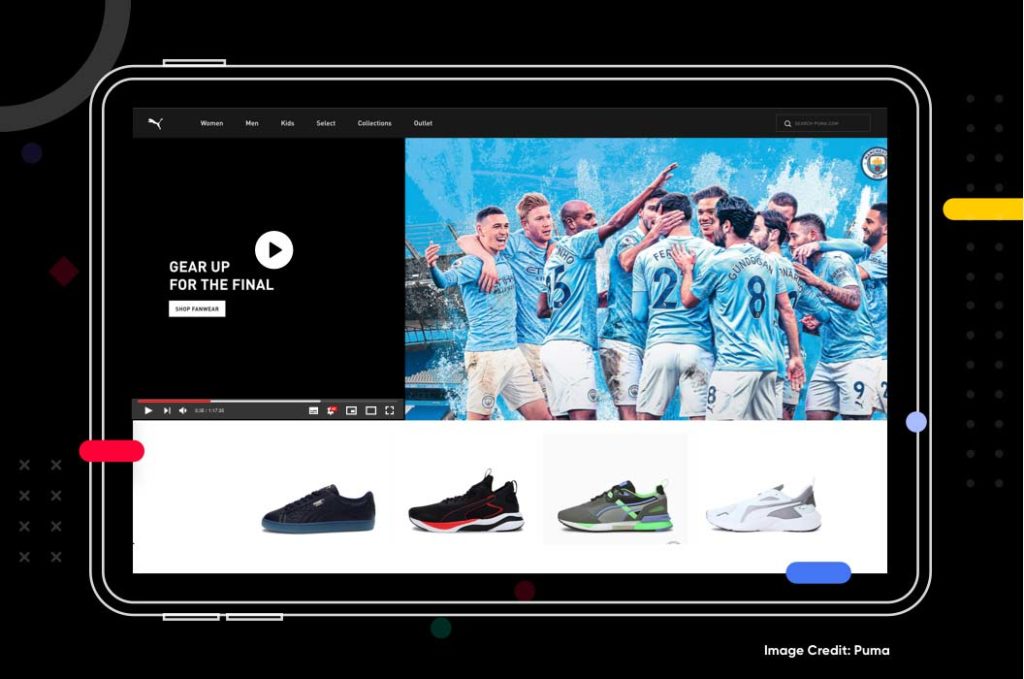
Puma, in 2015, was the leading company in experimenting with shoppable video. The sportswear company collaborated with a technology provider, Smartzer, to enable viewers to click instantly to buy from one of its campaigns. With shoppable video, customers could click on the red Puma logo that came upon specific products that Adam Lallana (a footballer) was wearing and opened up a pop-up with more insights.
4. Diesel
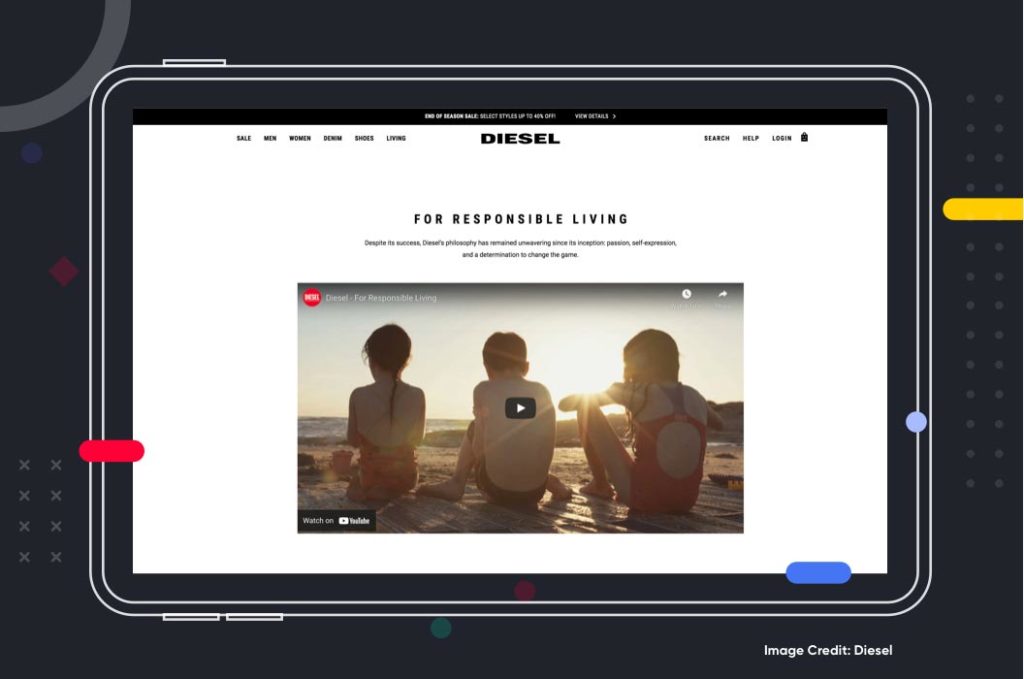
Diesel launched their shoppable video titled Road to Tokyo that displayed a group of models showcasing various outfits. Customers could click at specific points in the video or icons that appeared over the models. Once clicked, users got an option to save the item to their personal look book. Also, they could follow a link to buy on the Diesel store then and there.
5. Burberry
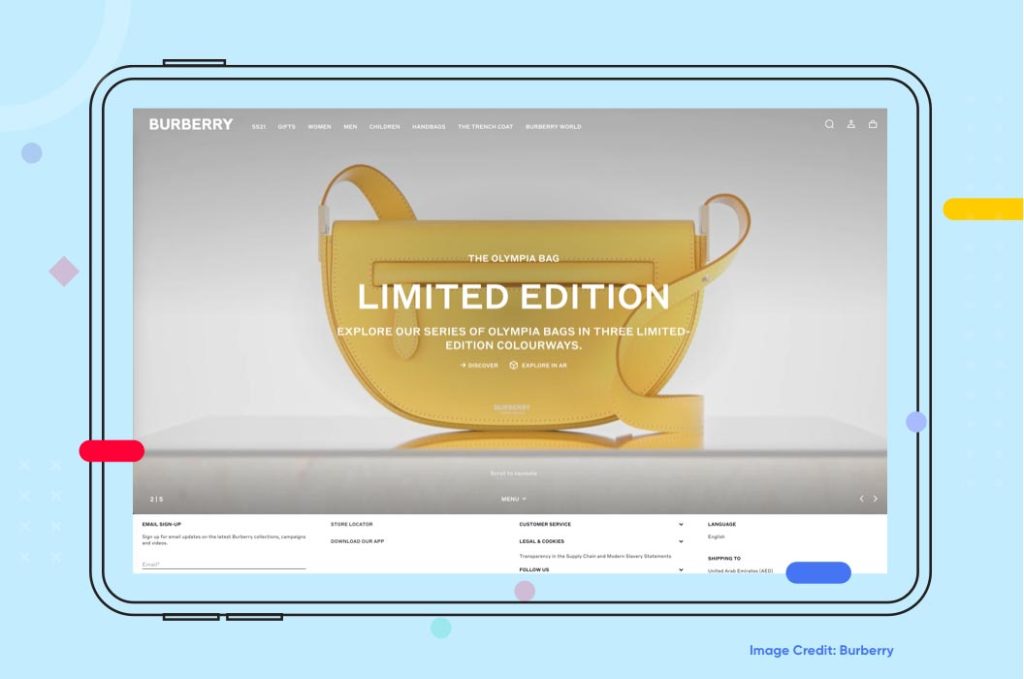
The shoppable video from Burberry enables viewers to click on their products that models wear. It offers detailed information about the product and directs them to a page that allows them to buy.
5 Most Popular Platforms for Shoppable Video
The future of shoppable videos is indeed bright. As per Wyzowl’s 2020 report, 89% of video marketers say that video provides them a good ROI. Also, with consumers showing a great interest in watching videos on social platforms like YouTube, TikTok, and Facebook, several retailers are now using these platforms to bring leads.
However, brands perform even better when they use some standalone platform to deploy videos. In a nutshell, there are several ways you can repurpose a shoppable video to get benefits. Here are a few shoppable video platforms that brands are using these days widely:
1. HapYak
The HapYak platform provides interactive video software that brands use to create shoppable videos and interactive experiences. It is used by professional brands like Avon and Best Buy to create beautiful and engaging experiences.
Brands can also use this platform to create interactive product pages to embed in videos and drive consumers down the sales funnel. To drive engagement to the video content, brands can also add chapters, quizzes, and several other elements into their video content.
2. Instagram
Loved by everyone, Instagram is another platform used widely by retail brands to promote their product using shoppable videos. The video and photo-sharing app Instagram launched its shoppable posts in 2018 to enable users to shop without even leaving the video and app. However, Instagram shoppable videos limit that you can tag only up to five products for promotion in a single video.
Though Instagram is a platform with a vast user base, you need to be creative to drive user’s attention. Original, creative, and engaging shoppable video content works best on Instagram and is a fantastic weapon to drive sales.
3. Amazon Live
Amazon Live is Amazon’s live-streaming venture where brands can engage with shoppers in real-time using interactive shoppable videos. Brands can use its live creator app to make and manage live streams. These streams then appear automatically on Amazon’s live home page and detail pages of the product.
Several brands use Amazon Live to increase sales of the products and increase their Amazon live levels. The benefit of higher live levels is that you can unlock extra placement for your live streams on the Amazon home page.
4. Bambuser
Bambuser is a Swedish SAAS-based company that focuses on interactive live video streaming. The features that attract big brands towards it include an in-player cart, a customizable player, live show scheduling, live chat, and analytics. Bambuser launched live video shopping in 2019, and within a year, it was able to attract renowned brands like Samsung to increase customer engagement and sales.
5. YouTube
In the year 2020, YouTube also made videos shoppable. It now shows browsable images of products below the advertisement to direct the traffic straight to the brand’s product pages. However, if you want to utilize shoppable videos on YouTube, you will have to sync your advertisement with your Google Merchant Center feed. This way, you would be able to expand the ad’s CTA to pages and send watchers directly to those products on your site.
Final Thoughts
Big brands are aligning their buying process with shoppable media to drive conversions. Incorporating interactive videos into eCommerce development solutions helps in streamlining online shopping, sales, and marketing activities. Information collected from videos allows businesses to gather realistic insights into customers.
Implementing an engaging, entertaining, and informative shoppable video technology can significantly help increase conversions and sales. Creating shoppable videos in 2021 and the years ahead will enable you to strengthen & enhance the company’s digital commerce strategy. It enables you to track customer preferences and several factors that can help boost sales. It is a powerful way for brands to connect with customers and has become an essential medium for digital media users.



